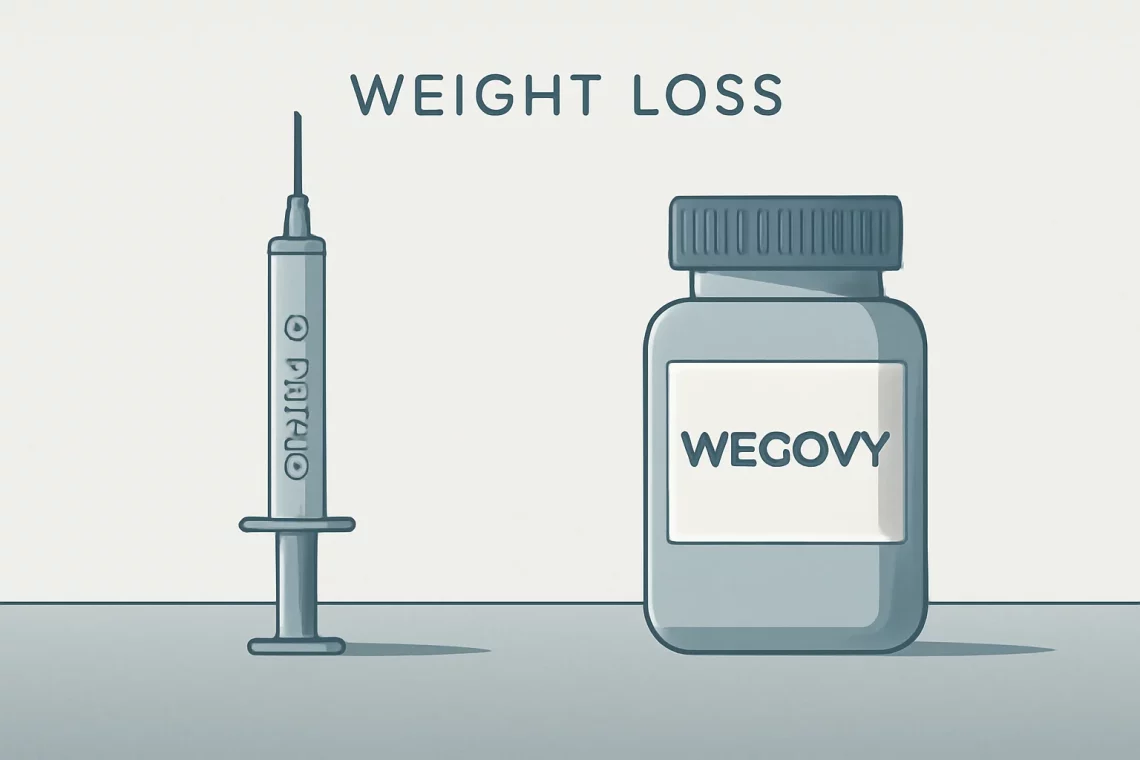
Ozempic vs Wegovy: Which Weight Loss Solution Is Right for You?
Ozempic and Wegovy have emerged as two significant players in the realm of weight management and diabetes treatment. Both medications are based on the same active ingredient, semaglutide, yet they serve distinct purposes and target different patient populations. With the growing prevalence of obesity and type 2 diabetes, understanding the nuances between these two options is crucial for patients and healthcare providers alike. Each drug has its own set of benefits, potential side effects, and administration methods, which can greatly influence a patient’s choice. The demand for effective solutions to manage weight and blood sugar levels is at an all-time high, leading to increased interest in these medications. As individuals seek to improve their health and well-being, it’s essential to delve into the specifics of Ozempic and Wegovy, examining their mechanisms of action, intended use, and overall effectiveness. By providing clarity on these two treatments, patients will be better equipped to make informed decisions regarding their health.
Understanding Ozempic: Mechanism and Use
Ozempic is primarily prescribed for the management of type 2 diabetes. Its active ingredient, semaglutide, mimics the action of GLP-1 (glucagon-like peptide-1), a hormone that plays a significant role in glucose metabolism. By enhancing insulin secretion when blood sugar levels are elevated, Ozempic helps to lower blood glucose levels effectively. Additionally, it inhibits glucagon release, which further contributes to glucose regulation.
One of the notable effects of Ozempic is its ability to promote weight loss, making it an appealing option for diabetic patients who are also struggling with obesity. Research has shown that individuals using Ozempic can experience substantial weight reduction, which can lead to improved overall health and a decreased risk of diabetes-related complications. The weight-loss aspect is attributed to the medication’s ability to slow gastric emptying, leading to increased satiety and reduced appetite.
Patients typically administer Ozempic through a once-weekly injection, making it a convenient choice for those who may have concerns about daily medication routines. However, like any medication, Ozempic comes with potential side effects. Common adverse effects may include nausea, diarrhea, and abdominal pain, especially when initiating treatment. It’s crucial for patients to discuss these possibilities with their healthcare providers to determine if Ozempic is the right fit for their individual health needs.
In summary, Ozempic serves as a vital tool in managing type 2 diabetes with the added benefit of weight loss. Its unique mechanism of action not only aids in controlling blood sugar levels but also supports patients in their journey toward a healthier weight.
Exploring Wegovy: A Focus on Weight Management
Wegovy, on the other hand, is specifically designed for chronic weight management. While it also contains semaglutide, its formulation and dosage differ from that of Ozempic, reflecting its targeted use for obesity treatment. Wegovy is approved for individuals with a body mass index (BMI) of 30 or greater, or those with a BMI of 27 or greater who have at least one weight-related medical condition.
The mechanism through which Wegovy aids weight loss is similar to that of Ozempic, focusing on appetite regulation and promoting feelings of fullness. By acting on areas of the brain that control hunger and satiety, Wegovy helps reduce caloric intake, leading to significant weight loss over time. Studies have indicated that patients using Wegovy can lose an average of 15% of their body weight, which can result in notable health improvements, such as lower blood pressure and improved cholesterol levels.
Wegovy is also administered via a once-weekly injection, enhancing its convenience for users. However, as with any medication, it is essential for patients to be aware of potential side effects, which may include gastrointestinal issues, increased heart rate, and in rare cases, pancreatitis. Monitoring by healthcare professionals is recommended to ensure the patient’s safety and to assess the effectiveness of the treatment.
In conclusion, Wegovy stands out as a specialized option for individuals seeking to manage their weight effectively. Its unique formulation and targeted approach make it a valuable addition to the arsenal of obesity treatments available today.
Comparative Effectiveness: Ozempic vs. Wegovy
When considering the effectiveness of Ozempic and Wegovy, it’s important to recognize that while both medications utilize the same active ingredient, their intended outcomes differ significantly. Ozempic is focused on blood sugar control in individuals with type 2 diabetes, while Wegovy targets weight loss in those struggling with obesity.
Research indicates that both medications can lead to weight loss, but the extent and context of that weight loss can vary. Patients using Wegovy may experience more pronounced weight loss due to the specific dosing and formulation tailored for obesity treatment. However, for individuals with type 2 diabetes, Ozempic provides the dual benefit of managing blood glucose levels while also contributing to weight reduction.
In clinical studies, those using Wegovy often report higher levels of weight loss compared to those on Ozempic. This is particularly relevant for patients whose primary concern is weight management rather than diabetes control. However, it’s crucial to note that both medications require a comprehensive approach that includes lifestyle changes such as diet and exercise for optimal results.
Ultimately, the choice between Ozempic and Wegovy should be guided by individual health goals and medical considerations. Healthcare providers play a vital role in helping patients weigh the options based on their specific circumstances, ensuring that the chosen medication aligns with their overall health objectives.
Potential Side Effects and Considerations
While both Ozempic and Wegovy offer promising benefits, potential side effects must be considered when evaluating these medications. Common side effects for both treatments include gastrointestinal issues such as nausea, vomiting, and diarrhea. These symptoms can be bothersome, particularly when initiating treatment, but they often diminish over time as the body adjusts to the medication.
In rare cases, more serious side effects may occur. Patients should be aware of the risk of pancreatitis, which has been reported with the use of GLP-1 receptor agonists. Symptoms of pancreatitis include severe abdominal pain, nausea, and vomiting, and should prompt immediate medical attention.
Additionally, there have been concerns regarding the potential risk of thyroid tumors associated with semaglutide. Although the data is primarily derived from animal studies, it underscores the importance of ongoing monitoring and discussions with healthcare providers regarding any unusual symptoms.
For individuals with a history of medullary thyroid carcinoma or multiple endocrine neoplasia syndrome type 2, the use of these medications may not be advisable. It is critical for patients to disclose their full medical history to their healthcare provider to ensure a safe and effective treatment plan.
In summary, while Ozempic and Wegovy can provide significant health benefits, potential side effects must be carefully considered. Open communication with healthcare professionals is essential to navigate these concerns and make informed decisions about treatment options.
**Disclaimer:** This article is for informational purposes only and should not be considered medical advice. Individuals should consult their healthcare provider for personalized recommendations and treatment options.




